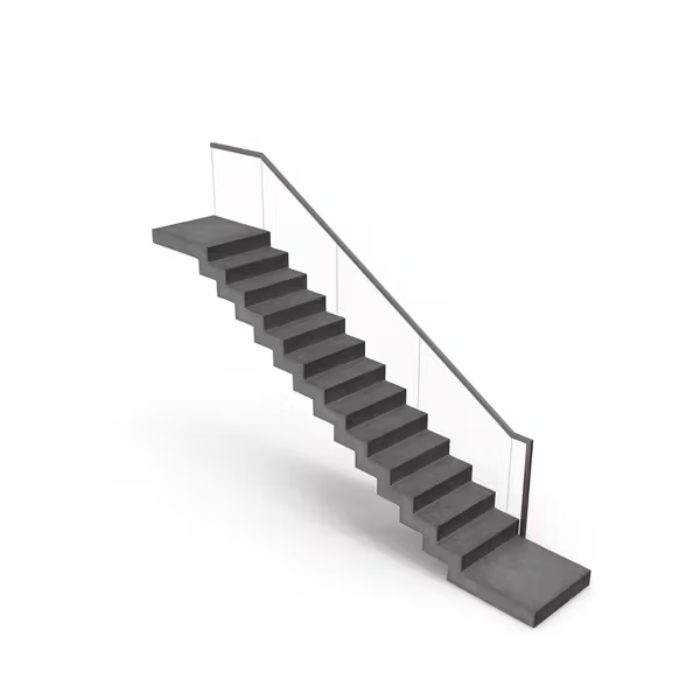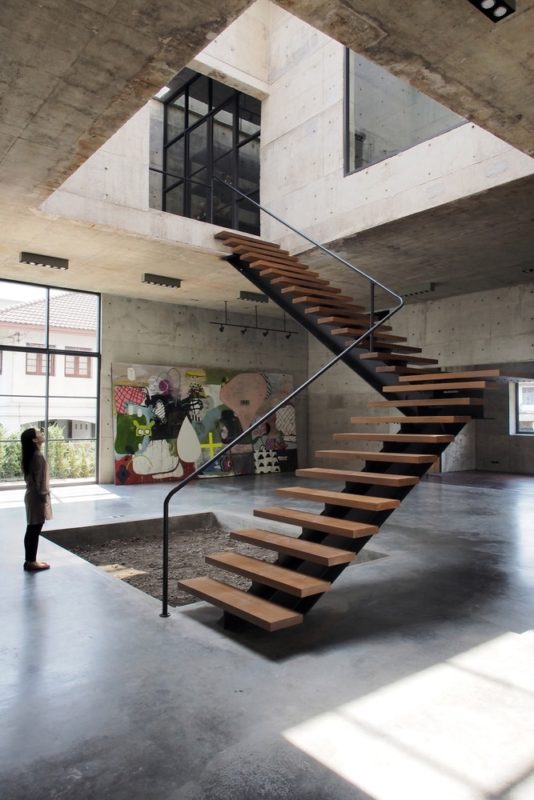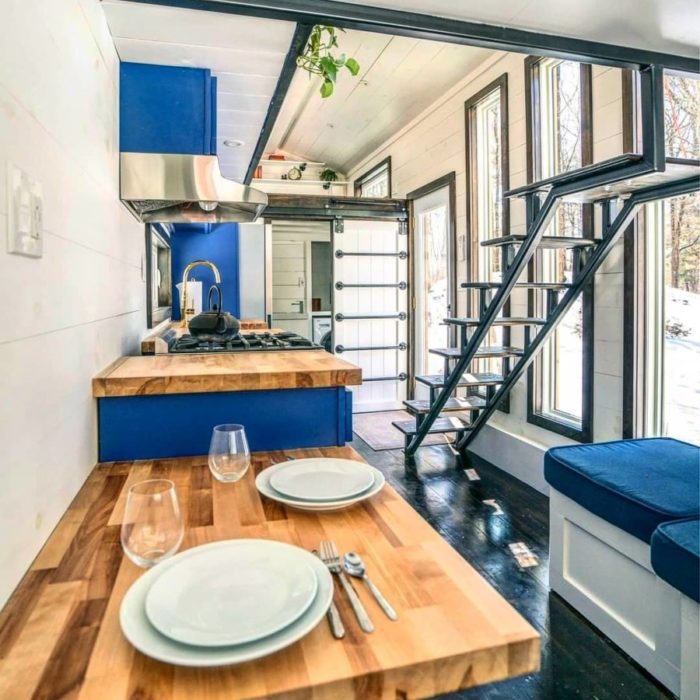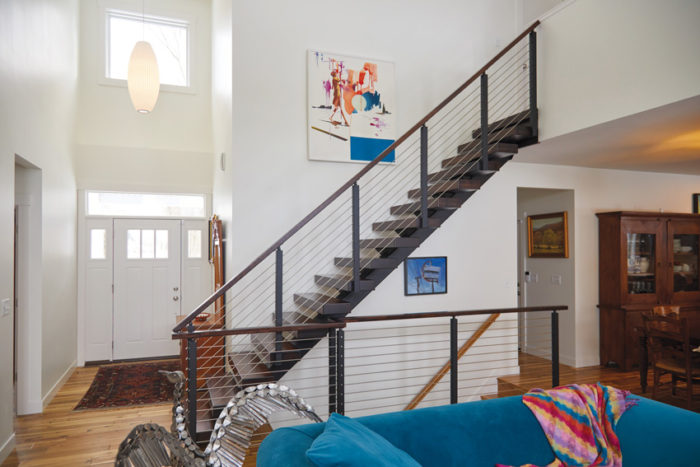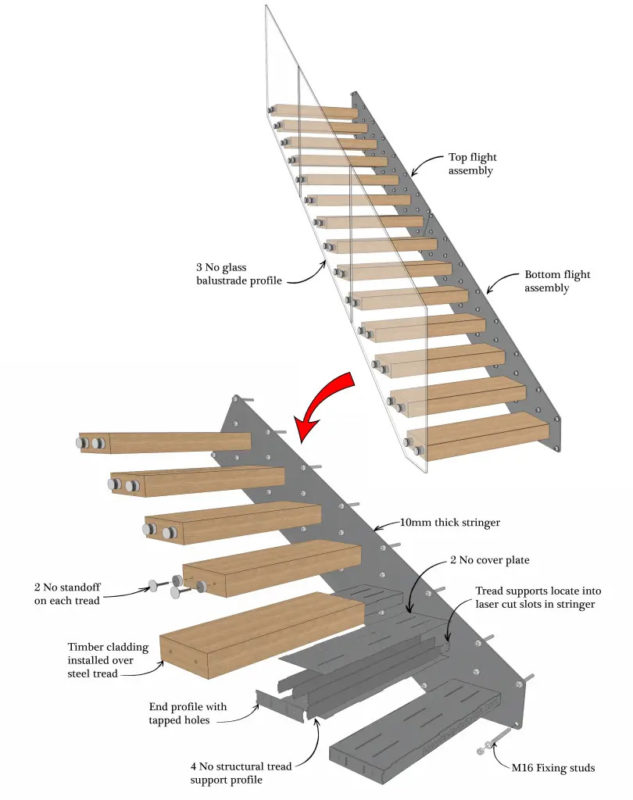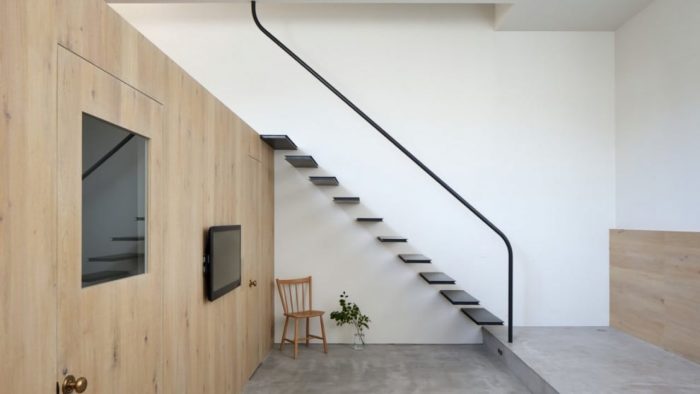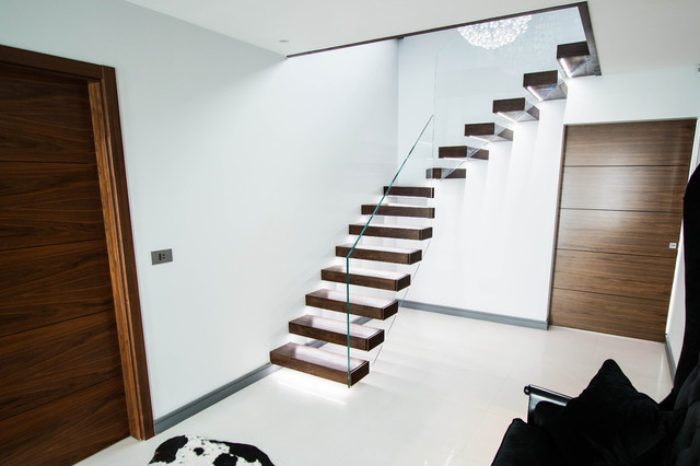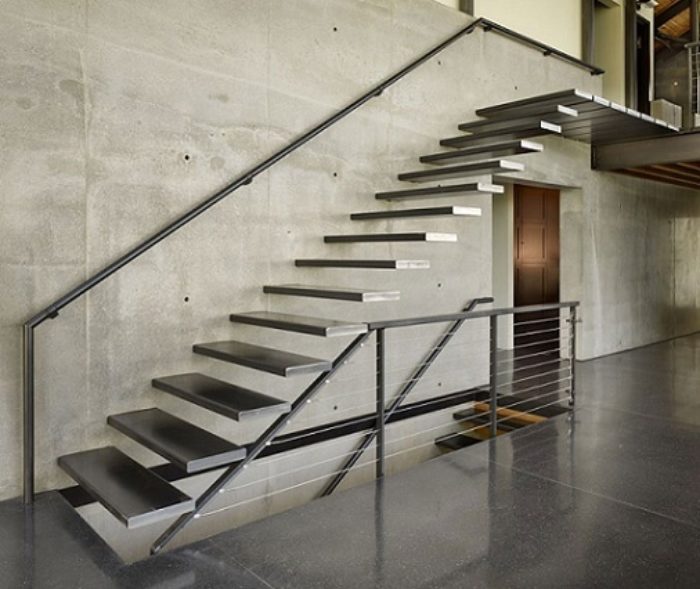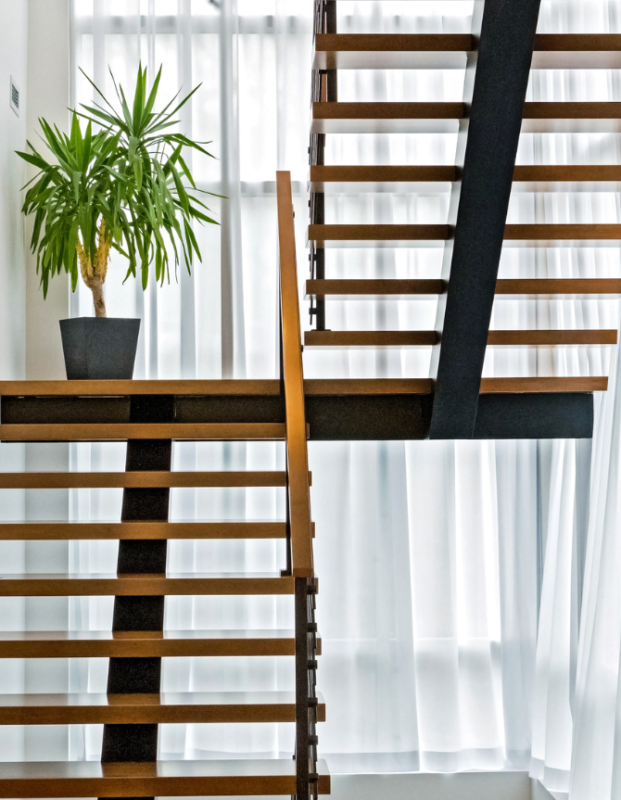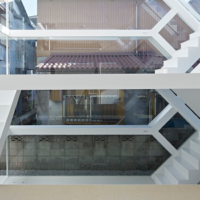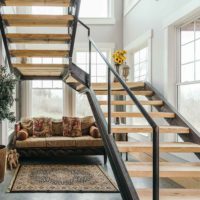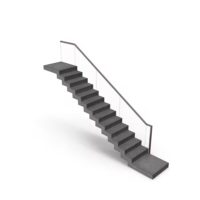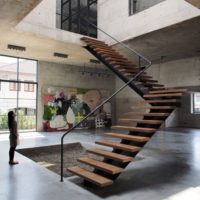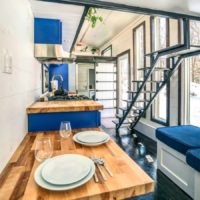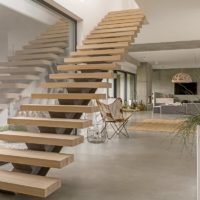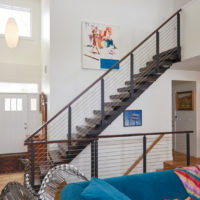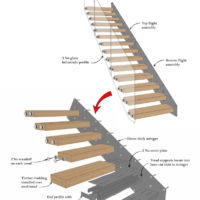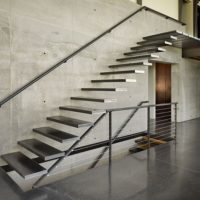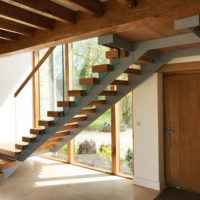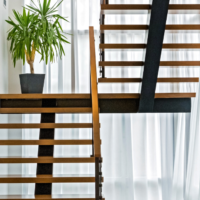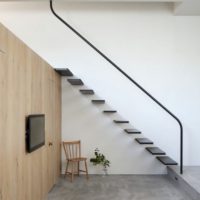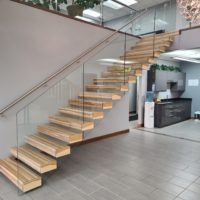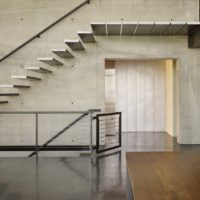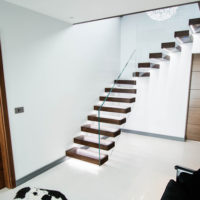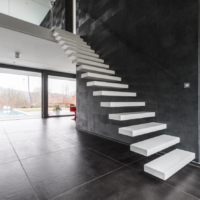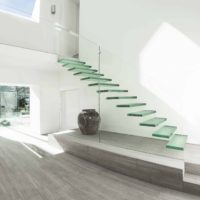Floating staircases have become a captivating architectural trend that can add a touch of elegance and modernity to any home or space. These staircases, often called “floating staircases,” create an illusion of weightlessness and openness, making them popular among homeowners and designers. In this guide, we will explore the world of floating staircases and provide essential tips and creative ideas to detail a fantastic floating staircase that will leave a lasting impression.
Understanding Floating Staircases: What are Floating Staircases?
Before we dive into the nitty-gritty of detailing a floating staircase, let’s first understand what makes them unique. Floating staircases are a type of staircase that seemingly “floats” in mid-air without the traditional structural support of risers or stringers. Instead, they rely on hidden or minimalist support systems, often anchored to the wall or embedded within the steps. This design creates a striking visual effect, emphasizing the sense of openness and space.
Why Opt For A Floating Staircase?
- Aesthetic Appeal
Floating staircases are visually captivating, making them an excellent choice for modern and contemporary interior designs.
- Space Optimization
They use less visual and physical space, which can be particularly beneficial in smaller homes or tight spaces.
- Natural Light
Floating staircases allow more natural light to filter through the space, enhancing the overall ambiance.
- Customization
These staircases offer a high level of customization, allowing you to choose from various materials, styles, and designs.
- No Danger Concerns
Floating staircases offer the same level of safety as conventional staircases due to the absence of any space between the steps and the vertical supports, minimizing the potential for tripping or falling accidents. Additionally, these staircases are commonly constructed using anti-slip materials, ensuring you don’t need to be concerned about slipping and falling.
- Installation is Simple
Installing floating staircases is remarkably straightforward compared to the often challenging process of setting up traditional staircases. Instead of intricate assembly, floating staircases only require secure attachment to the wall, making them an ideal choice for DIY enthusiasts or individuals with limited home improvement experience.
Key Considerations for Detailing a Floating Staircase
Now that you understand floating staircases let’s explore how to detail one effectively. Detailing a fantastic floating staircase requires careful planning and execution. Here are some key considerations to keep in mind:
1) Design and Style
When designing a floating staircase, the possibilities are virtually endless. Here are some creative ideas to get you started:
- Minimalist Marvel
Opt for a sleek, minimalist design with clear glass or acrylic treads and stainless steel handrails. This choice creates a sense of lightness and transparency.
- Natural Beauty
Incorporate organic materials like wood for a warm and inviting feel. You can choose from various wood species, finishes, and textures to match your interior.
- Industrial Chic
For an industrial look, consider using materials like metal and concrete. Exposed steel supports and open risers can create a bold and contemporary statement.
- Floating Illusion
Play with optical illusions using mirrored surfaces or hidden LED lighting beneath the steps. This adds an element of surprise and intrigue to your staircase.
- Understated Elegance
Opt for traditional materials like marble or granite if you prefer a classic and timeless look. Combine these with a graceful handrail for an elegant touch.
2)Material Selection
Choosing suitable materials for your floating staircase is crucial for aesthetics and durability. Consider the following:
Treads:
Common tread materials include wood, glass, concrete, and stone. Choose a material that complements your design style and is slip-resistant for safety.
Supporting Structure:
Ensure the supporting structure, whether concealed or visible, is strong enough to bear the weight of the staircase and users. Steel or reinforced concrete is often used for this purpose.
Handrail:
Handrails are not only functional but also a prominent design element. Options include metal, wood, glass, or a combination of materials.
3) Safety Regulations
While aesthetics are important, safety should be your top priority when detailing a floating staircase. Ensure your design adheres to local building codes and safety regulations. Here are some safety considerations:
– Railing Height: Check local codes for the required height of the handrail to prevent falls and accidents.
– Tread Size: Ensure the tread size and riser height meet safety standards. Inconsistencies can lead to tripping hazards.
– Non-Slip Surface: Choose materials that provide a non-slip surface on the treads to prevent accidents, especially in homes with children or elderly residents.
4) Lighting and Ambiance
Adequate lighting can dramatically enhance the visual impact of your floating staircase. Consider the following lighting options:
– Under-Tread Lighting: Installing LED strips beneath each tread can create a stunning floating effect, especially in dimly lit spaces.
– Wall Sconces: Wall-mounted sconces along the staircase can add functional and ambient lighting.
– Skylights or Windows: Position the staircase near natural light sources like skylights or large windows to maximize daylight.
5) Professional Installation
Detailing a floating staircase is a complex task that requires precision and expertise. Hiring professionals specializing in staircase design and installation is crucial to ensure a safe and visually appealing result.
Maintenance and Longevity
To ensure your floating staircase remains fantastic for years to come, it’s essential to maintain it properly:
– Regular Cleaning: Clean the treads and handrails regularly to prevent the buildup of dirt and grime.
– Inspect for Wear: Periodically check for signs of wear and tear, such as loose treads or damaged handrails, and address them promptly.
– Protective Coatings: Depending on the materials used, consider applying protective coatings or sealants to enhance durability and appearance.
Final Thoughts
Designing and detailing a fantastic floating staircase can elevate the aesthetic and functionality of your home or space. Whether you prefer a minimalist, natural, or industrial style, there are endless possibilities to explore. Remember to prioritize safety, choose high-quality materials, and seek professional help. By carefully considering your design and implementing creative ideas, you can transform your space with a breathtaking floating staircase that will leave a lasting impression on all who visit. So, go ahead and embark on this architectural journey, and let your floating staircase become the centerpiece of your home, showcasing your unique style and design sensibilities.
- S-House l Yuusuke Karasawa Architects. © Koichi Torimura
- © Silent Rivers
- © Envato Elements
- Courtesy of ASWA Phuttipan Aswakool
- © Tiny House Talk
- © Hardwood Lumber Company
- Courtesy of CE Center
- © Home Design Tutorials
- © India MART
- © Paradigm Stairs
- © Prestige Metal
- © Architecture Art Designs
- © Spindle Factory
- Courtesy of Houzz
- Courtesy of Houzz
- © Genico
- © GlasSpace



